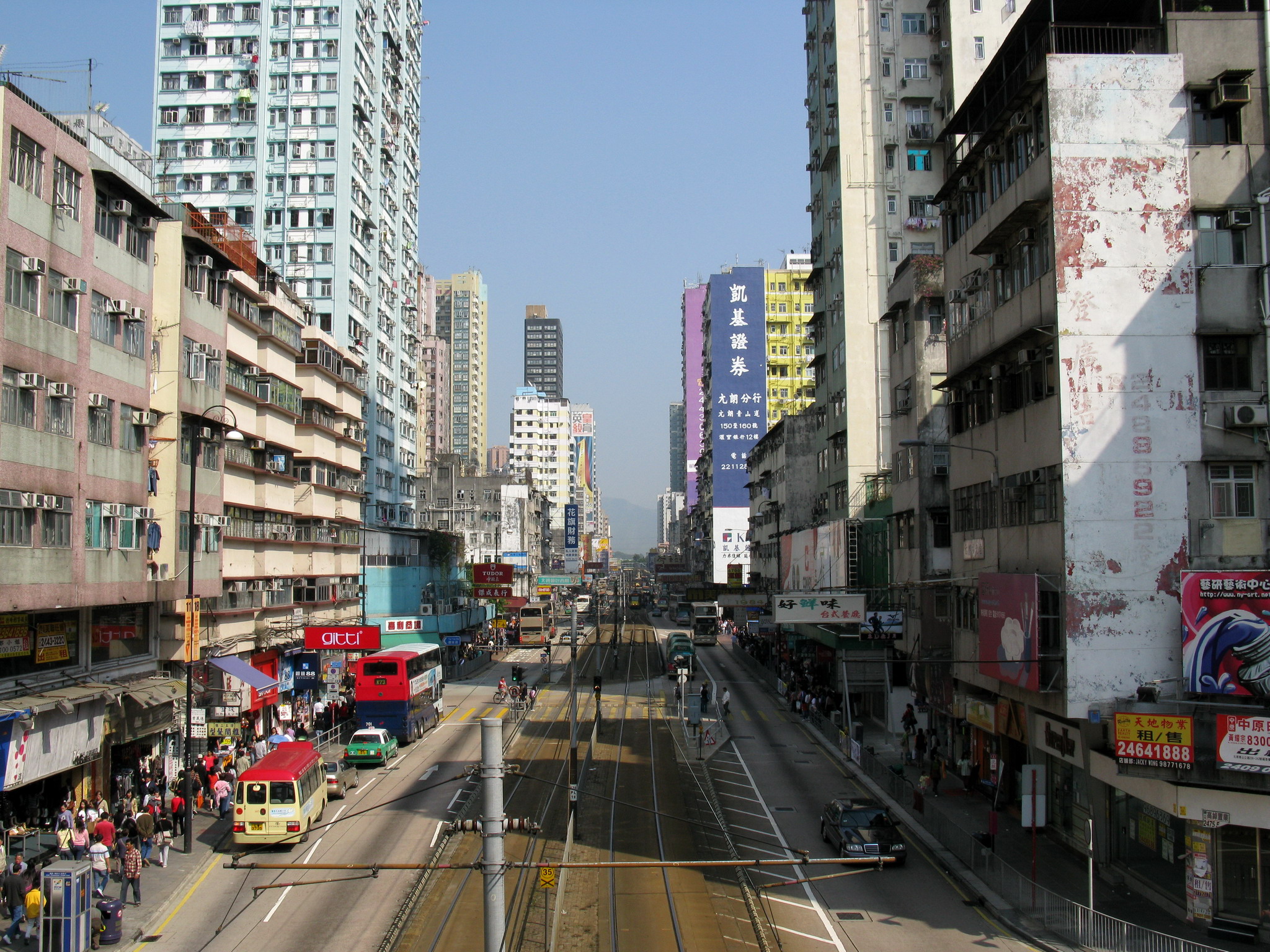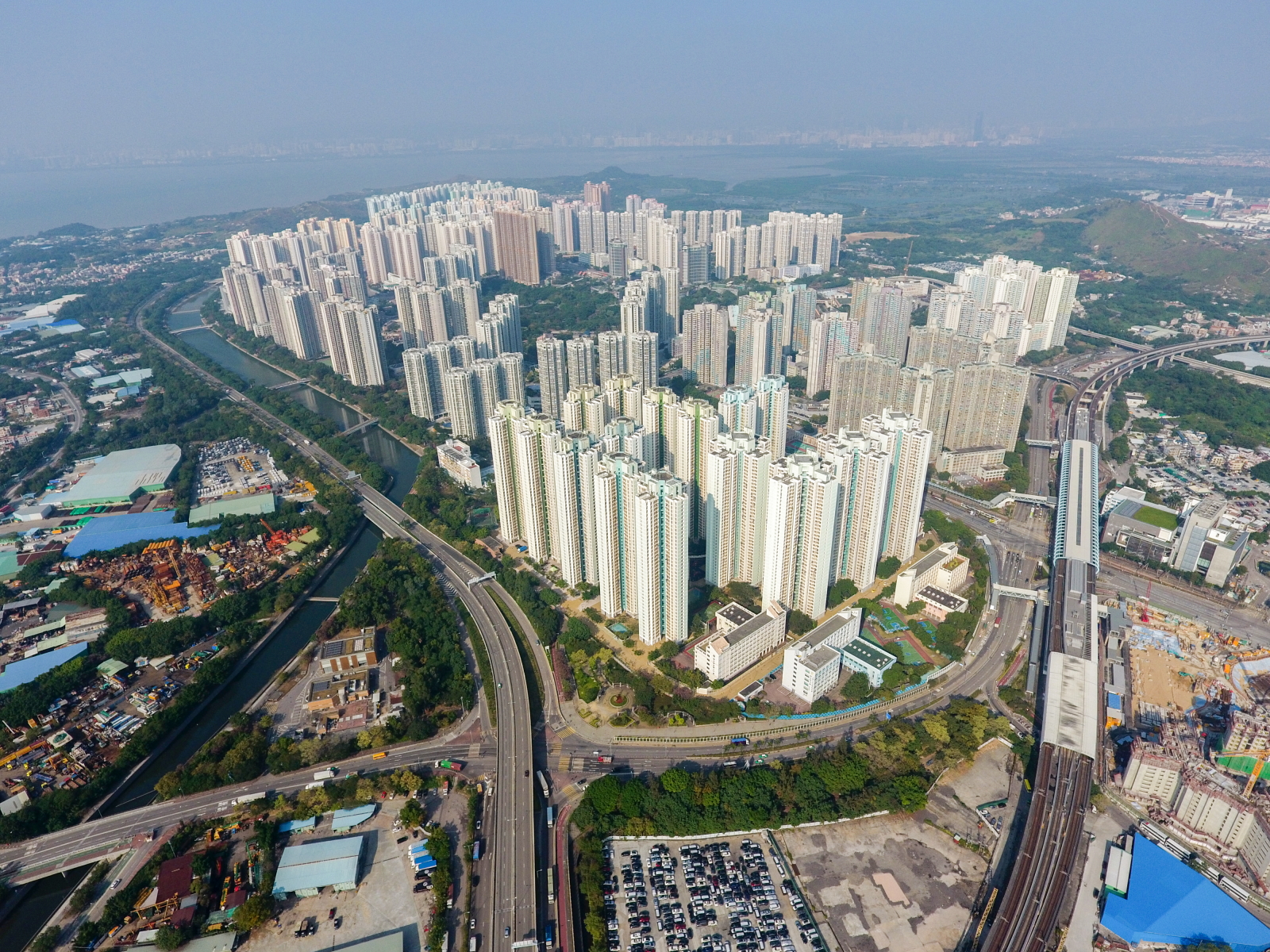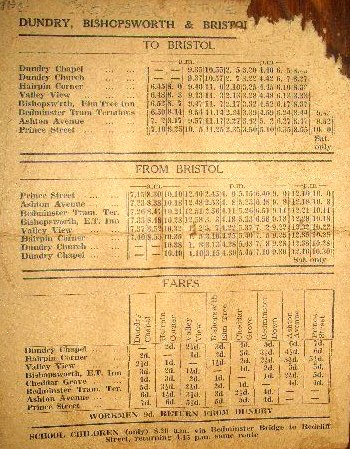|
Bus Transport In Hong Kong
Bus services in Hong Kong have a long history. As of 2023, four companies operate franchised public bus services. There are also a variety of non-franchised public bus services, including feeder bus services to railway stations operated by MTR Corporation, MTR, and residents' services for residential estates (particularly those in the New Territories). History Current situation Bus services in Hong Kong can be roughly divided into three types: franchised buses, non-franchised buses and public light buses. Franchised bus As of 2023, there are four privately owned bus companies providing Transit bus, franchised bus services across Hong Kong, operating more than 700 routes with some 5,800 buses. Hong Kong is one of the few cities in the world that bus services are not operated or owned by the Government. These are the four franchised bus companies in Hong Kong: * Kowloon Motor Bus Company (1933) Limited Mainly provides service in Kowloon and New Territories, operating about 4 ... [...More Info...] [...Related Items...] OR: [Wikipedia] [Google] [Baidu] |
MTR Corporation
MTR Corporation Limited is a majority government-owned public transport operator and property developer in Hong Kong which operates the Mass Transit Railway, the most popular public transport network in Hong Kong. It is listed on the Hong Kong Stock Exchange, Hong Kong Exchange and is a component of the Hang Seng Index. The MTR additionally invests in railways across different parts of the world, including franchised contracts to operate rapid transit systems in Elizabeth line, London, Stockholm Metro, Stockholm, Beijing Subway, Beijing, Hangzhou Metro, Hangzhou, Macau Light Rapid Transit, Macao, Shenzhen Metro, Shenzhen, Sydney Metro, Sydney, and a suburban rail system in Metro Trains Melbourne, Melbourne. History The Mass Transit Railway Corporation () was established on 22 September 1972 as a government-owned statutory corporation to build and operate a mass transit railway system to meet Hong Kong's public transport needs. On 30 June 2000, the MTRC was succeeded by the M ... [...More Info...] [...Related Items...] OR: [Wikipedia] [Google] [Baidu] |
Kowloon Tong Station
Kowloon Tong is a station on MTR's and in New Kowloon, Hong Kong. The station serves Kowloon Tong and its vicinity, including Yau Yat Tsuen, the Festival Walk shopping centre, City University of Hong Kong and Hong Kong Baptist University. The station straddles the boundary between Kowloon City District and Sham Shui Po District. This station serves as one of four interchange stations for the , leading up to the New Territories and entry point to mainland China. Therefore, it is one of the busiest stations in the system. History On 1 October 1910, the KCR British Section opened, including Beacon Hill Tunnel, but without any station at Kowloon Tong. Kowloon Tong station on the KCR opened on 4 May 1982, serving as an interchange point with the MTR. On 1 October 1979, the first phase of the MTR's Kwun Tong line opened to the public, including Kowloon Tong station. Kumagai Gumi is the main contractor under Contract 205. A new underground southern concourse for the was ope ... [...More Info...] [...Related Items...] OR: [Wikipedia] [Google] [Baidu] |
Light Rail (MTR)
The Light Rail, also known as the Light Rail Transit (LRT), officially the North-West Railway, is a light rail system in Hong Kong, serving the northwestern New Territories, within Tuen Mun District and Yuen Long District. The system operates over track, using overhead power supply. It was once one of four systems comprising the KCR network in Hong Kong, before the MTR–KCR merger in 2007. It has a daily ridership of about 483,000 people. The network is coloured goldenrod on the MTR map. History Planning and commencement When Tuen Mun was developed in the 1970s, the Hong Kong government set aside space for the laying of rail tracks. There was uncertainty however as to which company would be chosen to build the railway. In 1982, Hong Kong Tramways showed interest in building the system and running double-decker trams on it, before abandoning the project after negotiations over land premiums for related property development failed. The government sought ano ... [...More Info...] [...Related Items...] OR: [Wikipedia] [Google] [Baidu] |
Tuen Ma Line
The Tuen Ma line () is a commuter rail / rapid transit line that forms part of the Mass Transit Railway (MTR) system in Hong Kong. It is in length, making it the longest line of the MTR network. It has a total of 27 stations, more than any other in the MTR system. It is indicated in on the MTR map. The Tuen Ma line is a merger of two former MTR lines, the West Rail line and the Ma On Shan line via a new stretch of mostly underground railway known as the "Tai Wai to Hung Hom section" () of the Sha Tin to Central Link project. It consists of of track and six new intermediate stations. The Tai Wai to Kai Tak section (大圍至啟德段) opened on 14 February 2020, while the Kai Tak to Hung Hom section opened on 27 June 2021, thereby completing the line. During the planning and construction phase, this line was referred to as the "East West Corridor" (). On 25 May 2018, the operational name "Tuen Ma line" was confirmed by the MTR Corporation, reflecting the names of Tu ... [...More Info...] [...Related Items...] OR: [Wikipedia] [Google] [Baidu] |
Yuen Long
Yuen Long is a town in the western New Territories, Hong Kong. To its west lie Hung Shui Kiu (), Tin Shui Wai, Lau Fau Shan and Ha Tsuen, to the south Shap Pat Heung and Tai Tong, to the east Au Tau and Kam Tin (), and to the north Nam Sang Wai. Name According to Gazetteer of Xin'an County (新安縣志) and other ancient maps, Yuen Long was first written as 圓蓢 (lit. Round Basin or Round lowland).Yuen Long Now & Then (n.d.), Hong Kong Public Library. Available at:https://www.hkpl.gov.hk/sc/common/attachments/hkcl/resources/resources_ml_yl.pdf Yuen Long refers to a large plain surrounded by a series of hills, starting from Oyster Hill (蠔殼山) in Ou Tau (凹頭) on the east and ending at Tai Tau Shan (大頭山) in Tuen Mun on the west, which is like a basin. Yuen Long is in the Shan Pui River Basin (山貝河流域). From the literal meaning, it can be inferred that Yuen Long was a swampy lowland with abundant water resources in ancient times. The Cantonese name Yu ... [...More Info...] [...Related Items...] OR: [Wikipedia] [Google] [Baidu] |
Tin Shui Wai
Tin Shui Wai New Town is a new towns in Hong Kong, satellite town in the northwestern New Territories of Hong Kong. Originally a ' () fish pond area, it was developed in 1980s in Hong Kong, the 1980s as the second New towns of Hong Kong, new town in Yuen Long District and the eighth in Hong Kong. It is due northwest of Central, Hong Kong, Central, the main business area in the territory, on land reclaimed from low-lying areas south of Deep Bay (Hong Kong), Deep Bay, next to Ping Shan. The population was 283,595 as of 2021. History The land on which Tin Shui Wai was built did not exist at the beginning of the 1900s, while the adjacent Ping Shan was by the sea. The water north of Ping Shan gradually turned to marshes and villagers converted them into pond, pools and paddy field, rice paddies. The pools became ''gei wai'' fish ponds where most of the residents were fishermen before the new town was developed. With the decline in aquaculture, most of the fish ponds were abando ... [...More Info...] [...Related Items...] OR: [Wikipedia] [Google] [Baidu] |
Tuen Mun
Tuen Mun () or Castle Peak is an area near the mouth of Tuen Mun River and Castle Peak Bay in the New Territories, Hong Kong. It was one of the earliest settlements in what is now Hong Kong and can be dated to the Neolithic period. In the more recent past, it was home to many Tanka fishermen who gathered at Castle Peak Bay. Tuen Mun is now a modern, mainly residential area in the north-west New Territories. As of 2025, around 540,000 residents live in Tuen Mun. History During the Tang dynasty (618907), a navy town, Tuen Mun Tsan () was established in Nantou, which lies across Deep Bay. Tuen Mun and the rest of Hong Kong were under its protection. A major clan, To (), brought the name Tuen Mun to the area. They migrated from Jiangxi on the Chinese mainland and established a village, Tuen Mun Tsuen (),Antiquities and Monuments OfficeTuen Tsz Wai - History/ref> late in the Yuan dynasty (1272–1368). As more and more villages were established, the village was renamed T ... [...More Info...] [...Related Items...] OR: [Wikipedia] [Google] [Baidu] |
MTR Bus
MTR Bus (legally Northwest Transit Service Area Bus Service) is a public transport, public Bus services in Hong Kong#Non-franchised buses, non-franchised bus service in Hong Kong operated by the MTR Corporation, serving the northwestern part of the New Territories. It comprises a network of 22 feeder bus routes for the convenience of passengers using the MTR rapid transit network, providing access to and between many MTR stations on the Tuen Ma line and Light Rail (MTR), Light Rail. The service carried approximately 51 million passengers in 2019 and is integrated with MTR's fare system to allow Tuen Ma line and Light Rail passengers who use Octopus cards to enjoy the free feeder bus services that link many housing estates along these lines. Along with the Light Rail, the MTR Bus service also plays an important role in the internal transport network of Tuen Mun, Yuen Long and Tin Shui Wai. The similarly named MTR Feeder Bus refers to feeder bus routes connecting to East Rail ... [...More Info...] [...Related Items...] OR: [Wikipedia] [Google] [Baidu] |
Tourist Attraction
A tourist attraction is a place of interest that tourists visit, typically for its inherent or exhibited natural or cultural value, historical significance, natural or built beauty, offering leisure and amusement. Types Places of natural beauty such as beaches, tropical island resorts, national parks, mountains, deserts and forests, are examples of traditional tourist attractions which people may visit. Cultural tourist attractions can include historical places, sites of significant historic wikt:event, event, monuments, ancient temples, zoos, public aquarium, aquaria, museums and art galleries, botanical gardens, buildings and structures (such as List of forts, forts, castles, library, libraries, former prisons, skyscrapers, bridges), theme parks and carnivals, living history museums, public art (sculptures, statues, murals), ethnic enclave communities, heritage railway, historic trains and cultural events. Factory tours, industrial heritage, creative art and crafts workshops a ... [...More Info...] [...Related Items...] OR: [Wikipedia] [Google] [Baidu] |
Transport Department (Hong Kong)
The Transport Department of the Government of Hong Kong is a department of the Hong Kong Civil Service, civil service responsible for transportation-related policy in Hong Kong. The department is under the Transport and Logistics Bureau. The Transport Department was created on 1 December 1968 as a separate department within the Hong Kong Government. Prior to 1968 it was assigned to the Transport Office under the Chief Secretary for Administration, Colonial Secretary's department. History The Transport Office was founded in 1965 within the Colonial Secretariat, initially with a staff of 23. The office was set up in response to the territory's worsening traffic problems, and was modelled after the systems in Britain and other Commonwealth countries, with the new department taking responsibility for vehicle registration and driver licensing. In 1968, it was spun off as a separate government department, and was renamed as the Transport Department. In 1974, the department's headqua ... [...More Info...] [...Related Items...] OR: [Wikipedia] [Google] [Baidu] |
Public Transport Bus Service
Public transport bus services are generally based on regular operation of transit buses along a route calling at agreed bus stops according to a published public transport timetable. History of buses Origins While there are indications of experiments with public transport in Paris as early as 1662, there is evidence of a scheduled "bus route" from Market Street (Manchester), Market Street in Manchester to Pendleton, Greater Manchester, Pendleton in City of Salford, Salford UK, started by John Greenwood d.1851, John Greenwood in 1824. Another claim for the first public transport system for general use originated in Nantes, France, in 1826. , a retired army officer who had built public baths using the surplus heat from his flour mill on the city's edge, set up a short route between the center of town and his baths. The service started on the Place du Commerce, outside the hat shop of a M. Omnès, who displayed the motto ''Omnès Omnibus'' (Latin for "everything for everybod ... [...More Info...] [...Related Items...] OR: [Wikipedia] [Google] [Baidu] |
Limited-stop
In public transit, particularly bus, tram, or train transportation, a limited-stop (or sometimes referred to as semi-fast) service is a trip pattern that stops less frequently than a local service. Many limited-stop or semi-fast services are a combination of commuter rail and express train. The term is normally used on routes with a mixture of fast and slow services, and can differ in meaning, depending on how it is used by different transit agencies. The main benefits of limited-stop or semi-fast services is the ability to utilise skip-stop calling pattern to maximise capacity along the line, as opposed to a commuter service stopping at every station which slows trailing express trains down. Railways On railways, the layout of the tracks and number and length of platforms at stations normally limit the extent to which a blend of fast/semi-fast/slow services can be operated. Australia In Australia, particularly in Queensland Rail City network, Brisbane and NSW TrainLink, Sydney ... [...More Info...] [...Related Items...] OR: [Wikipedia] [Google] [Baidu] |





